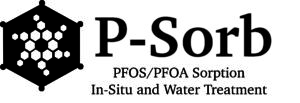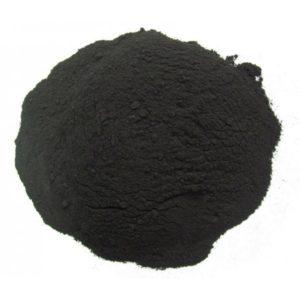
P-Sorb™ is a virgin activated carbon (AC) produced from a rare coal utilizing a high temperature activation process under stringent quality control uniquely suited for sorption of PFAS, PFOA, & PFOS with sorption capacity of 100-110 mg/kg which may achieve 100% higher sorption capacity compared to activated carbons offered by competitors. Activated carbon is an approved method for treating PFAS (ITRC 2023).
CERES brings this technology to the market for soil and groundwater remediation applications to use as a standalone solution for PFAS compounds or in combination with other sequestration and reduction reagents including MTS®, organoclay, ZVI, Bacteria, TEAs or Donors to degrade or reduce many other contaminants of concern including heavy metals, chlorinated solvents, petroleum hydrocarbons, methyl tert-butyl ether (MTBE), PAHs or other VOCs and SVOCs.
Would you like a quote for your project or a sample of one of our zero valent iron products? We can help –

Physical Properties
Powder Form: D50: 15 µ, >90% less than 44 µ
Granular Form: 600 µ- 2,000µ,
Solubility in Water: Not soluble
Color: black
99% Purity
Fine Powder to coarse grain size available
Highly reactive
Density: 0.40 g/cm3
Surface area: 950- 1,000 m2/g
P-Sorb™ is a non-corrosive and non-toxic powder and granular activated carbon that can be very effective in low permeability formations and injected into silts and clays (Winner and Fox, 2016) or combined with sand to improve hydraulic conductivity and preferential pathways for more rapid diffusion and effective capture of PFAS compounds.
How does P-Sorb improve remediation performance in mixed COC applications?
Introducing adsorptive media, like P-Sorb™, to the treatment zone improves sequestration of PFAS compounds over time to reduce mass flux and when combined with biotic or abiotic reagents can facilitate the formation of active biofilm and enhanced biodegradation processes (Voice et al, 1992), abiotic reduction of competing VOCs, thereby improving long term performance of PFAS sequestration. The combined effects often result in synergistic processes
that significantly prolonging the remediation lifetime to achieve increased value and/or exceed remedial objectives. The coupling of adsorption and degradation reduces the potential for contaminant rollover effects or competing contaminant rebound that is frequently observed with conventional remediation technologies.
How does PSorb reduce diffusive mass flux and potentially reduce overall time of remediation at mixed COC and PFAS sites?
The addition of P-Sorb™ into the target treatment zone of the aquifer, results in rapid adsorption/sequestration of PFAS and other organic compounds. This is revealed in reduced dissolved phase concentrations in the aquifer, verified by reducing trends in groundwater monitoring wells. The reduction in dissolved phase compounds, increases rates of diffusion of adsorbed phase contaminants into the aquifer. P-Sorb™ decreases the high concentrations in soluble phases that may aid in reducing the lag time for biodegradation of other biodegradable organics present along with PFAS compounds (Aktas, et al, 2012). It is imperative that biotic or abiotic processes are employed to complement P-Sorb™ to ensure destruction of all biodegradable COCs encountered over time and reduce long-term competition.
P-Sorb™ is effective in low permeability formations when injected into silts and clays (Winner and Fox, 2016) or combined with sand proppant to improve hydraulic conductivity and preferential pathways to increase diffusive mass flux and effective capture of VOCs.
When working with CERES, you are not just getting something to inject, you are getting a product we engineered for your specific site! We modify our products to your site so you are getting more attention and a tailored solution that will do more than achieve chemical reaction, we are talking about a change in the fate and transport processes by both hydrogeologic, geochemical and redox reactions.
iPAC is ready to inject with guar or crosslinked gels for hydraulic fracturing methods. It is commonly employed to support barrier applications to reduce or eliminate off-site transport of VOCs, to stabilize hot spots not otherwise economically addressed by other methods, and to complement plume remediation strategies. Yes, it can also be used for PFOS/PFOA sites. Ask about iPAC-PF to learn more.
iPAC is non-corrosive to underground structures or piping systems and non-toxic.